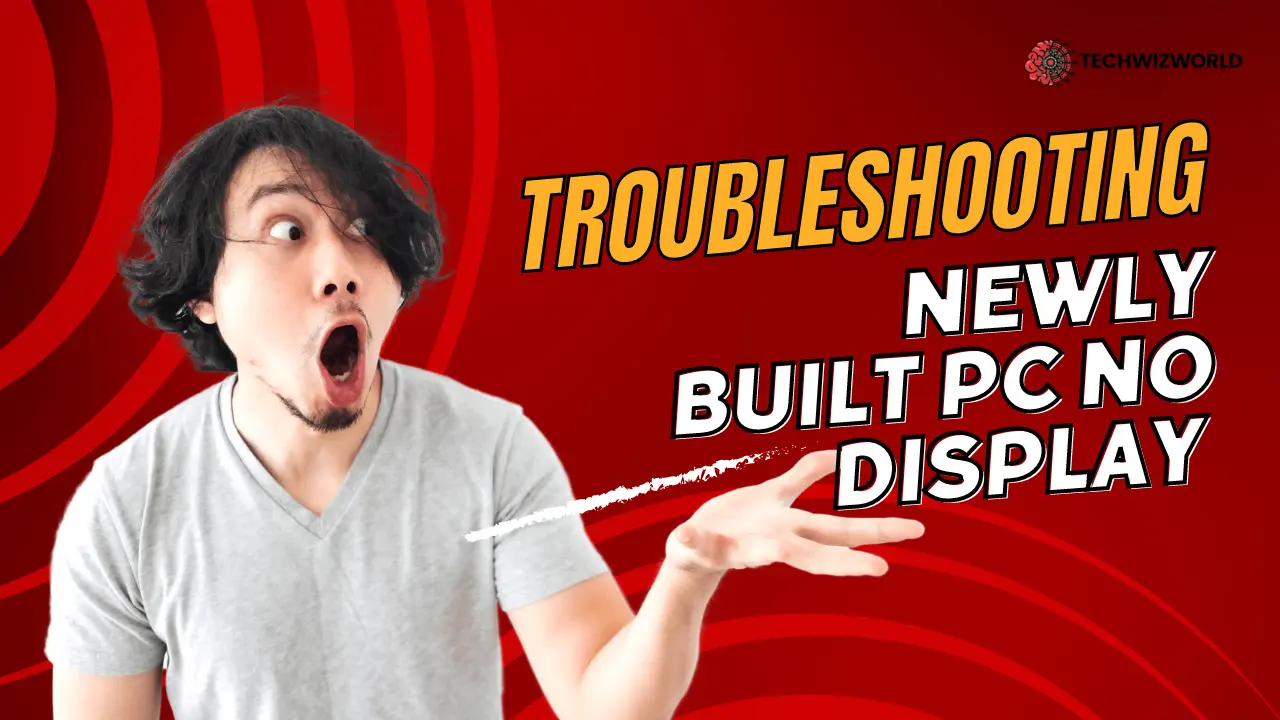Building your own PC can be a rewarding experience, but it can also be frustrating when you encounter issues like a newly built PC no display problem. When your freshly assembled machine refuses to show any signs of life on the monitor, it’s natural to feel concerned. This comprehensive guide is designed to help you troubleshoot and resolve the common “newly built PC no display” issue. We will walk you through step-by-step solutions to identify and fix the potential causes of this problem. Whether it’s a loose connection, incompatible hardware, or BIOS settings, understanding the possible reasons behind a newly built PC no display will empower you to get your system up and running smoothly. By following this guide, you can systematically eliminate issues and enjoy the fruits of your labour without unnecessary frustration.
Initial Checks
Before diving into complex troubleshooting, start with the basics. Always read and understand the manufacturer guides for your components. Make sure your power supply switch is in the ON position, not set to the circle. Verify that your monitor is connected to the correct video port on your graphics card, not the motherboard’s ports. Test the monitor with another device or use a different monitor with your newly built PC to rule out a faulty display. These simple steps can often resolve the newly built PC no display issue quickly.
Power Supply and Connections
Ensure that both your motherboard power cable and CPU power cable are securely plugged in. Double-check that the front panel connectors are correctly attached to the motherboard. These small cables connect the case’s power button, reset button, and LEDs to the motherboard. If they are not properly connected, your PC might not turn on at all. Verify the CPU fan cable is connected to the correct header on the motherboard. These connections are critical in resolving a newly built PC no display problem.
RAM Troubleshooting
Incorrectly installed RAM is a common cause of the newly built PC no display issue. Make sure your RAM sticks are fully seated in their slots. If you are using more than one stick, refer to your motherboard’s manual to ensure they are in the correct slots. Test each stick individually in different slots to identify any faulty RAM or slot issues. Confirm that your RAM is compatible with your motherboard to avoid incompatibility problems.
Video Card Troubleshooting
Ensure that your video card is properly seated in its PCIe slot and that any required PCIe power connectors from the power supply are securely connected. If your CPU has integrated graphics, try booting without the dedicated video card to see if the integrated graphics can produce a display. This can help identify if the video card is the source of the newly built PC no display issue.
CPU and Cooler Installation
A poorly seated CPU can cause significant issues. Make sure the CPU is correctly oriented in the socket, aligning the notches or arrow indicators. Check that there is no excess thermal paste running down the sides or underneath the CPU, which can cause shorts. Verify that the CPU cooler is properly installed and that its fan is connected to the motherboard. Ensuring these components are correctly installed is essential to solving the newly built PC no display problem.
Motherboard and BIOS Checks
Some motherboards feature error code or debug LEDs that light up when there is a problem. Check these indicators to identify specific hardware issues. Clear the CMOS by removing the button cell battery or using the clear CMOS jumper on the motherboard. Inspect for bent pins on the motherboard or processor, which can cause connection issues. Ensure that the motherboard standoffs are correctly installed and that there are no loose screws or objects underneath the motherboard. Addressing these areas can help fix the newly built PC no display issue.
Compatibility Issues
Hardware compatibility is crucial. Ensure all your components are compatible with each other. Check if a BIOS update is needed for your motherboard to support a newer CPU. Use RAM that is listed on your motherboard’s qualified vendor list to avoid incompatibility issues. These checks can prevent and resolve the newly built PC no display problem.
Advanced Troubleshooting Techniques
If simpler solutions fail, try breadboarding your PC. Remove the motherboard from the case and place it on a non-conductive surface like cardboard. Install the CPU, RAM, and video card, and connect the power supply. Try booting the system by jumping the power switch pins. If it boots successfully, your case may be causing a short. This method helps isolate the cause of the newly built PC no display issue.
Conclusion
In summary, troubleshooting a newly built PC no display issue requires a systematic approach. Begin with basic checks, then move through power supply and connection verifications, RAM and video card troubleshooting, and CPU and cooler installation inspections. Don’t overlook motherboard and BIOS checks or potential compatibility issues. If needed, use advanced techniques like breadboarding to isolate the problem. Patience and methodical troubleshooting will help you resolve the newly built PC no display problem and enjoy your new system. If issues persist, consult manufacturer support for further assistance.


Leave a Reply